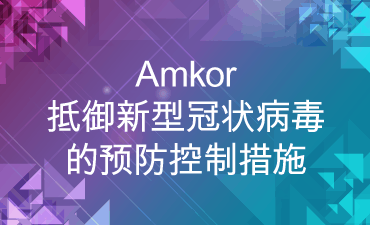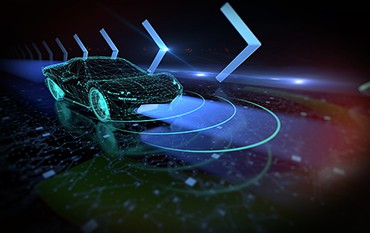48V Ecosystem and Power Packaging Trends

With each passing year, emerging growth application areas such asAutomotive, Cloud Computing,工业的Automation, and Telecom (5G)基础设施更加关注。虽然应用程序段不同,但是在系统级别实现了电压转换和功率分布的平均值。系统要求变得越来越重要,无法减少有效的碳足迹。因此,正在开发和部署新的48V生态系统,以满足各种目标,包括非常高的效率。无论是电源,计算元素还是存储器块,半导体都处于满足这些需求时解决方案的关键。bob软件本文的重点是讨论每个应用领域的市场和技术趋势,并就创新的电力包装平台如何试图满足电气和热需求的思考。
Automotive
Most luxury vehicles today run several millions of lines of code networking up to 100 electronic control units (ECUs) [1]. The higher the degree of electrification, comfort features, and advanced driver assistance systems (ADAS) in a car, the higher the need for the total power budget. As some of these advanced features, offered today in luxury cars, migrate to standard cars, cost becomes imperative without sacrificing the efficiency of the electrical power system. Today’s existing vehicle power tree is powered directly from a 12V battery to the mechanical auxiliary loads (typically < 5-7 kW) such as water and oil pumps, climate compressor, active roll control, headlights, and taillights. These loads, combined with additional requirements to satisfy stricter emissions norms from Corporate Average Fuel Economy (CAFE) standards and power-hungry ADAS systems, makes it challenging to improve efficiency. Though the car original equipment manufacturers (OEMs) have been replacing mechanically driven components with electrical counterparts for many years, there is a further need for newer architectures such as the 48V system. In the short-term, OEMs and their tier-one (Tier1) suppliers may opt for dual architectures (12V and 48V) until a permanent shift to a 48V power net occurs in the future.
汽车OEM和Tier1最近推出了几种温和的混合动力汽车(MHEV)解决方案。例如,奥迪推出了一种新的皮带交流发电机系统(BAS),容量为12 kW,以供电,同时也为传统的12V系统实现DC-DC转换器[2]。同样,戴姆勒为其S级引入了集成的启动器(ISG),其容量可达16 kW [2]。戴姆勒(如奥迪)也在为传统12V负载实施DC-DC转换器块。Tier1供应商Valeo推出了其Ecruise4U平台,结合了自动化驾驶和48V混合系统。该平台的产品之一,E4AWD巧妙地结合了集成的带动发电机(IBSG)和电动后轴驱动器(ERAD),向其MHEV系统增加22千瓦容量,从而将燃料消耗降低17%。Delphi是另一个汽车Tier1,推出了48V混合系统,如图1所示,其中包括E-Supercharger,其将燃油效率提高15%。该电子增压器系统还可以使用动态跳过火(DSF)气缸停用概念,减少13%的二氧化碳排放[2]。
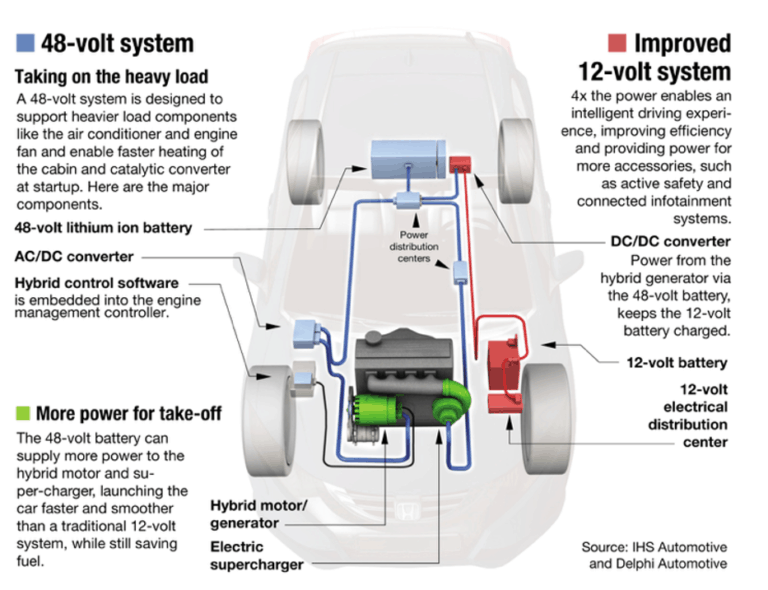
Figure 1: 48V Mild Hybrid System from Delphi Technologies (formerly Delphi Automotive)
转换到48V电源网可以实现多种益处,例如布线线束横截面和减轻重量,导致较轻的车辆和减少减少。虽然在转向架中的机械部件的电气化,舒适性和便利性和其他系统有助于,使用电机(<25kW)温和杂交将具有显着的有形效果。一个估计表明,MHEV将使二氧化碳排放量减少15%,其中大约为全混合系统成本的大约30%的益处的70%。显然,预计与全杂化车约4500美元相比支付额外1500美元左右的支付1500美元左右的愿意为MHEV车辆增长产生动力。此外,48V电源网还可以用于为未来的车辆到所有(V2X)连接和ADA提供系统准备(负载控制点)。在未来十年期间,随着3级到5级的自动驾驶车辆,ADAS系统的电源要求将仅涌现。目前的2级能力按1KW的顺序需要功率速率,而4级/级5系统需要10倍的电力。这与成本和排放福利一起,48V MHEV系统被视为扩张EV市场的网关。
Cloud Computing
如今,世界各地的超过七百万个数据中心可以管理超过2.5千万千字节的数据,从个人和商业用途中创建。在迄今为止创建的44个Zettabytes(44万亿千兆字节)的数据中,在过去2年中创建了90%的数据[3]。由于顶级(OTT)流媒体服务,5G,物联网(IoT), and social media, big data is expected to morph cloud and edge datacenter markets significantly. A typical data center would offer services such as data storage, processing,networking, and distribution. To manage these services, operators require tremendous amounts of power on the order of several 100s of MW. As much as 40% of the operating costs of the data center comes from the energy needed to power and cool racks of servers [4]. Power Usage Effectiveness (PUE) and Total Cost of Ownership (TCO) are two very important metrics for data center operators to reduce costs and improve utilization. On average, approximately 30-35% of the power is wasted in the conversion from the AC grid to the microprocessors of an individual server. Along this power path, losses can be reduced mainly in three areas – universal power supply (UPS, grid-to-data center), server rack power supply, and individual server power supplies. Until a few years ago, data centers were designed for 4 to 5kW per rack and now they are up to 10kW per rack. Increasing rack power density up to 30kW or more will be the trend in the future [5]. As a result, smaller and efficient power supplies are needed as they can improve the PUE, resulting in greater server density and additional revenue per foot of floor space ($/ft).

Figure 2: Datacenter Power Delivery Systems (Source: wiwynn [5])
In terms of power architecture, current data centers are designed to the 12V power net as shown in Figure 2. Like the automotive 48V system, datacenters’ power architecture also supports the shift to 48V. The shift results in higher power density, lower distribution losses (I2R losses by 16X), higher efficiency, deployment flexibility, and cost-effective in-rack UPSs [5]. The benefits at the rack level are obvious, given the reduction in busbar sizing, number of turbo capacitors, and copper losses. However, the challenge remains on how to achieve the voltage conversion from 48V to the server board. To power up the central processing unit (CPU) cores and Double Data Rate (DDR) memory blocks, traditionally sub 1.8V is required. For a higher step-down ratio (48V to 1.8V), achieving similar conversion efficiencies of switching circuits is difficult. Each power conversion stage, including AC-DC and DC to point of load, must have similar or higher efficiency at the rack level. To meet the system level congruity, smaller form factor and higher power capable semiconductor packaging are key.
5GInfrastructure
解决当前4G网络的缺点,5Gnetworks应该能够处理大量流量(无线电)和大容量(IoT,连接密度和带宽),同时非常可靠(边缘计算,延迟)。关键的变化包括新的频谱,更多的网站和多访问边缘计算。目前,4G LTE网络的传输带宽的理论极限约为150 Mbps,其无法满足5G的要求。为了实现更高的带宽,5G网络使用较高的C波段。此外,大规模多输入多输出(MIMO)技术是提高吞吐量的关键。如图3所示,就拓扑而言,现有的4G网络赞成分布式无线电接入网络(DRAN)架构,其中天线,远程无线电头(RRH)和基带单元(BBU)是分开的。然而,5G网络倾向于赞成集中式或云(C-RAN)分发以整合基带功能,将它们从小区站点移动到集中位置。在5G网络中,预计RRH和天线是集成的,而BBU池位于边缘站点。BBU池(或核心网络)共享相同的物理基础架构,包括路由器,物理基础设施,电力和冷却系统等网络设备。然而,更多的网站和更高的计算要求将进一步提高网络能耗。
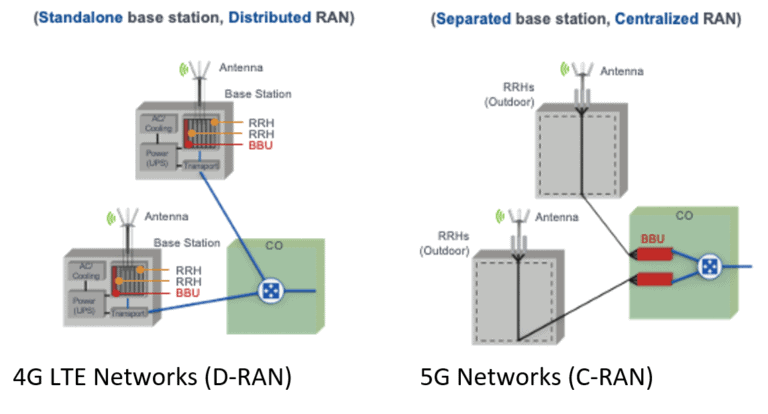
Figure 3: 4G LTE vs. 5G Network Topology
根据电信运营商,一个带5G设备的功耗可能350%,具有类似的配置[6]。5G BBU消耗约300W,而RRU在30%负载下耗尽约900W(峰值为1.4 kW)。随着在接下来的3年内添加更多频段,峰值功耗将增加到约14千瓦。除此之外,随着MM波的添加,峰值功率可能增加到20 kW [6]。尽管现有的4G电信电源是在-48V时设计的,但这些电源单元与5G需求不兼容。由于电源要求大约为1 kW,4g系统中的电源电缆的绝对功率损耗往往更小。然而,在5G系统中,相同电缆长度的绝对损耗更高,导致沿电缆的更高电压降。与大多数电源一样,一旦电压降至低于阈值“低输出电压”,电源会关闭。为缓解此问题,电源设计人员可以使用附加的DC-DC转换器将电压电平提升至约-57V以进行有效操作[6]。结果,5G网络的功耗增加为整个电源系统带来了挑战。
The 48V Impact on Semiconductors
Consistent with the market requirements discussed above, there are significant increases in new market opportunities for semiconductor suppliers. In the automotive sector, the mild hybrid segment is approximately 1.5% to 2% of the total production today; however, by end of the decade, it is expected to grow to about 15%. Consequently, power semiconductor content per car is expected to increase approximately $75/vehicle due to the adoption of mild hybrid systems. Similarly, with the migration to 48V power net in hyper-scale and 5G data centers, the power device bill of material (BOM) is set to increase by about $40. Finally, due to 5G infrastructure deployment, both cabinet and blade power supply requirements will increase the need for power transistors. The 48V Ecosystem presents an opportunity for semiconductor suppliers to apply synergies among these application segments. From the overall new market opportunity, Figure 4 outlines the key application segments and respective growth prospects. Whether its 48V in automotive and cloud computing or -57V in 5G power supplies, the underlying assembly, and test business is also set to grow significantly in the next decade.
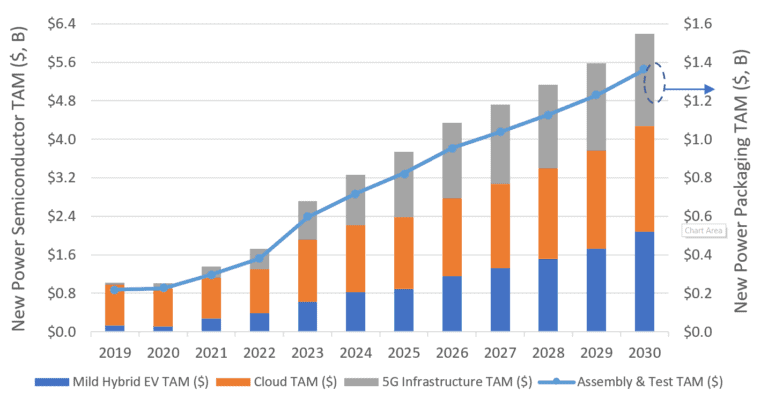
Figure 4: The 48V Ecosystem New Total Available Market (TAM) (Amkor estimates)
Technology Trends that Need Power Packaging
Considering the application trends discussed thus far, the common theme is that customers need power semiconductor solutions that are highly efficient, occupy less space, and very reliable. For over 30 years, power conversion efficiency and cost ($/W) has shown steady improvement due to innovations in silicon (Si) Power MOSFET technologies, power packages and circuit topologies. Though Si has been the workhorse, figures of merit (Ron x Qg, Ron x Qoss) have reached the theoretical bounds of Si. Newer material systems, such as gallium nitride (GaN), have entered the market space offering better performance. However, to realize system benefits, packaging technologies must not limit achievable electrical and thermal benefits. Historically, power device packaging has evolved from through-hole packages such as TO-247 andTO-220长长导致表面安装部件,导线如D2Pak,DPAK,SO-8。此外,铅包所取代lead-less surface mount options such as TO leadless (TOLL) andPQFN.。With the growing need for increased power density and highly reliable solutions, the packaging industry must deliver innovative options to meet the emerging trends. Customers may need solutions that offer effective thermal management via dual-side cooling, chip-scale packaging, and multi-die integration to reduce parasitics. However, there will be trade-offs in terms of cost, performance, and reliability.
汽车用例提供了一个有用的例子。皮带起动器发生器应用需要大约12kW,其中来自电力系统的中间导轨处于48V。电动机上电的逆变器阶段使用额定功率高于48V的MOSFET,而电流高于500A。通常,多个MOSFET并联以满足完全功率要求。在功率级,在为整个3相实现的高侧和低侧支腿中平行的电源级,特别是当功率级集成在电机本身内时,印刷电路板(PCB)空间是高级的。D2PAK7L, a common package used in such an application and wattage cases, has a package size of 15x10x4.4 mm. However, when several packages are required for a power stage, space becomes premium. Similar to D2PAK, TOLL (11.7 x 9.9 x 2.3 mm) is also a molded package that has been optimized for high power and high-reliability applications. ButTOLL(图5)提供dimens缩水30%ions and > 50% smaller form-fit allowing compact designs and high current capability and low thermal resistance (RthJC). Another critical aspect to note is evolving mission profiles for automotive semiconductors which mandates higher levels of reliability at the board level.
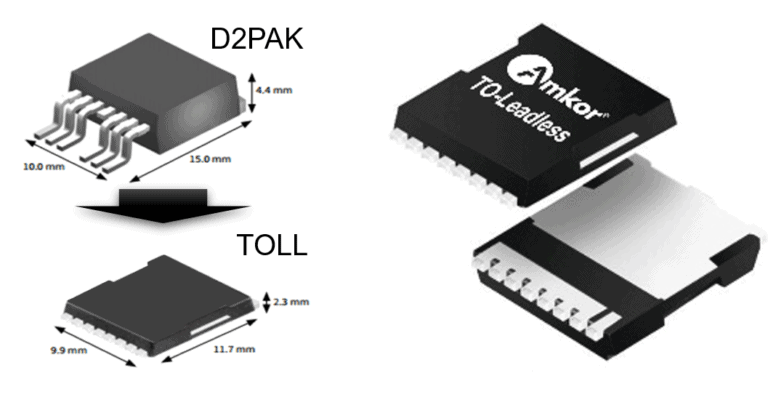
Figure 5: D2PAK 7L vs. TOLL Power Packages
云和边缘数据中心的服务器电源存在不同的电源要求,为CPU核心,DDR内存和负载点等备用轨道,风扇和驱动器提供电源。对于PORNATION的分布点(POL)架构是优选的应用,单个封装中的电源块或功率级是最佳选择。具有集成灵活性,套餐如PQFN.(图6)变得越来越受欢迎。PQFN封装提供了改进模具的范围,以便包装比和暴露的散热器,导致服务器电源的功率密度更高。较大的身体大小PQFN通过使用铜(CU)夹子技术,通过模具堆叠提供多个FET(电源块)的集成,如图6中的PQFN双堆叠图片所示。另一种选择是将栅极驱动器与高端集成低端电源FET(功率级)实现诸如DRMOS之类的智能电力应用。这在图6中显示为单叠选项。此外,PQFN用于电信基础设施,基带板和DC-DC转换器等应用中。

图6:PQFN多模电配置
Power Packaging Trends for the 48V Ecosystem
As one of the leading outsourced assembly and test (OSAT) suppliers, Amkor has a diverse portfolio to offer in the emerging 48V Ecosystem. This strong position stems from a global presence and partnerships with top semiconductor suppliers.Power packaging由两家不同的工厂地点 - amkor马来西亚(ATM)和Amkor Japan Fukui(ATJ6)提供支持。广泛地,提供了几种价值创造特性和技术差管,例如先进的引线框架技术(XDLF),铜夹互连,铝(Al)楔形键合,节省空间的表面架,扁平引线设计。如前所述,功率包装已经从通孔(To)类型的型材到表面安装(SMD)封装。最近,SMD诸如收费之类的无铅套餐得到了更多的关注。这些包装完全资格到汽车电子委员会的AEC-Q101标准,船上充足的电动循环和临时循环(TCOB)能力。但是,可以在可靠性,当前能力或包保护前面产生限制。因此,下面讨论了一些新兴的包装思想,以满足新的48V生态系统电力包装市场的要求。
Based on IPC International’s IPC-9701 standard, TOLL can fulfill the standard requirements of 1000 cycles (onboard) depending on die size and thickness. However, designers who require a high die to package ratio and/or extended reliability may find it challenging. Typical board substrates used are FR4, Cu-based intermetallic substrates (IMS), or Al-based IMS. However, when a substrate option such as Al-based IMS is considered, the board level reliability issues of TOLL may further exasperate due to vastly different thermal coefficients. The mismatch between the Cu leadframe and Al-IMS will lead to higher stress on the solder material, causing solder fatigue and cracks. By employing a gull-wing approach in the TOLL design (see Figure 7), TOLG can significantly improve the reliability levels while still offering comparable thermal and electrical performance. The flexibility of the gullwing design offers a marked improvement in reliability performance. This becomes imperative due to changing mission profiles in end-user segments, where extended stress and reliability have become a key system requirement.
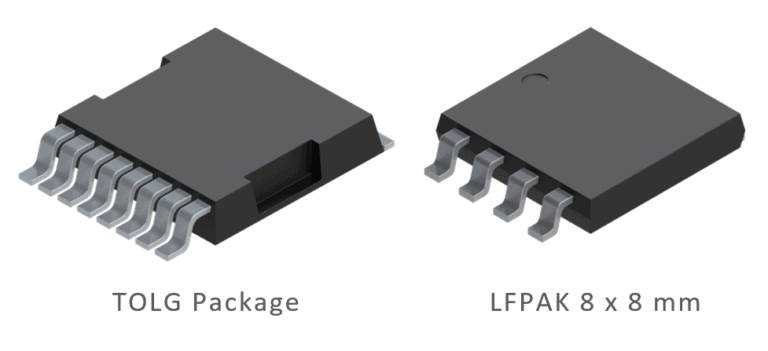
Figure 7: TOLG and LFPAK 8 x 8 mm Packages
Alternatively, as datacenter server farms migrate to 48V architectures, power density requirements to address PUE will be a key concern. The trends of improving power device figures of merit can only take designers so far. Newer packages, such as the LFPAK (see Figure 7) in bigger body sizes, like 8 x 8 mm, will be a great addition. Compared to a traditional 7L D2PAK, an 8×8-mmLFPAKis 60% smaller in mechanical dimensions but also 80% lower in volume. In terms of interconnect technologies, wire bonds determine the current-carrying capabilities of current generation power products. In the case of the D2PAK, the maximum diameter of the bond wires used is 20 mil. However, in the LFPAK 8 x 8 mm, by using copper clip technology for interconnects, the current-carrying capability will be much higher. Parasitic resistances and inductances from the wire bonds are minimized significantly with the clip technologies. This packaging approach alleviates some of the concerns for the achievable power densities.
在服务器架构,fast-transient反应times demanded by microprocessors have led to the adoption of POL converters and voltage regulators. The parasitic impedances of conventional power electronic packages, operating at frequencies over 1 MHz, are not adequate. In this regard, Amkor is exploring chip-scale packaging for power transistors – the PowerCSP™ package – as shown in Figure 8. This innovative concept is a leadframe-based chip-scale packaging, allowing for double-side cooling where the top/leadframe side can be connected to the heat sink or water cooling. The bottom side of the package can be mounted to the PCB using thermal vias and power Cu layers. Key advantages of the PowerCSP concept are that it eliminates wire bonds and/or Cu clips, resulting in low parasitic resistances and stray inductances thereby reducing conduction losses and switching losses, respectively. Additionally, the reduced parasitic inductance of PowerCSP helps in achieving higher switching frequencies and power densities. Compared to plastic power packages such as the PQFN or LFPAK, the PowerCSP design can be constructed with a simplified process flow thereby reducing possible sources for reliability concerns as well. Furthermore, PowerCSP packaging would provide a gateway for multi-die integration to realize converter-in-package type solutions.
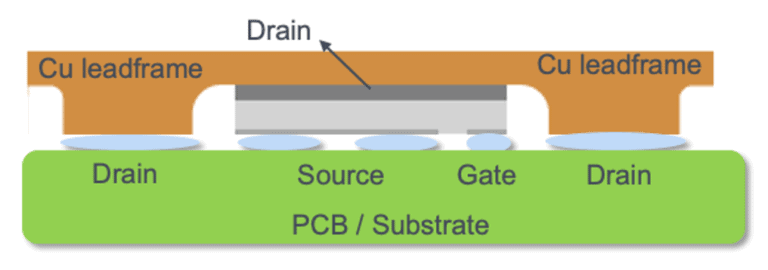
Figure 8: PowerCSP™ Package Concept
概括
受环境,经济和社会因素的推动,对复杂的电力电子解决方案的需求,降低总体拥有成本,将增加。新兴的48V生态系统为功率半导体封装段提供了一种倾向的网关。bob软件虽然电力包装成熟,但需要改进以满足新兴趋势。无论是改善骰子到包装的比例,还原包装寄生剂还是增加电流携带的互连,广泛的现有产品组合和创新的新方法都可以提供解决方案。这需要强大的技术诀窍和完善的客户伙伴关系,以提供这些挑战。Amkor不仅可以满足这些要求,而且还具有金融和技术实力,为设备和设施做出重大投资,并为其汽车和其他权力客户提供长期支持。
Author:Ajay Sattu,SR Manager,汽车战略营销
参考:
[1]. Manish Menon et al, “48V Architecture: A Cost-effective Proposition for OEMs to Meet Growing Emission Norms”, Aug 14th, 2018
[2]. Automotive IQ et al, “The rise of 48V technology – an Automotive IQ eBook”, Aug 14th, 2018
[3]. Branka Vuleta et al, “How much data is created every day?”, Jan 30th, 2020
[4]. Energy Innovation et al, “How much energy do datacenters really use?”, Mar 17th, 2020
[5]. wiwynn et al, “48V: An improved Power delivery system for Data Centers”, Jun 2017
[6]。全球ICT能源效率Summit等,2019年10月“5G电信电力目标网络”
PowerCSP™ is a trademark of Amkor Technology, Inc.
© 2020, Amkor Technology, Inc. All rights reserved.




